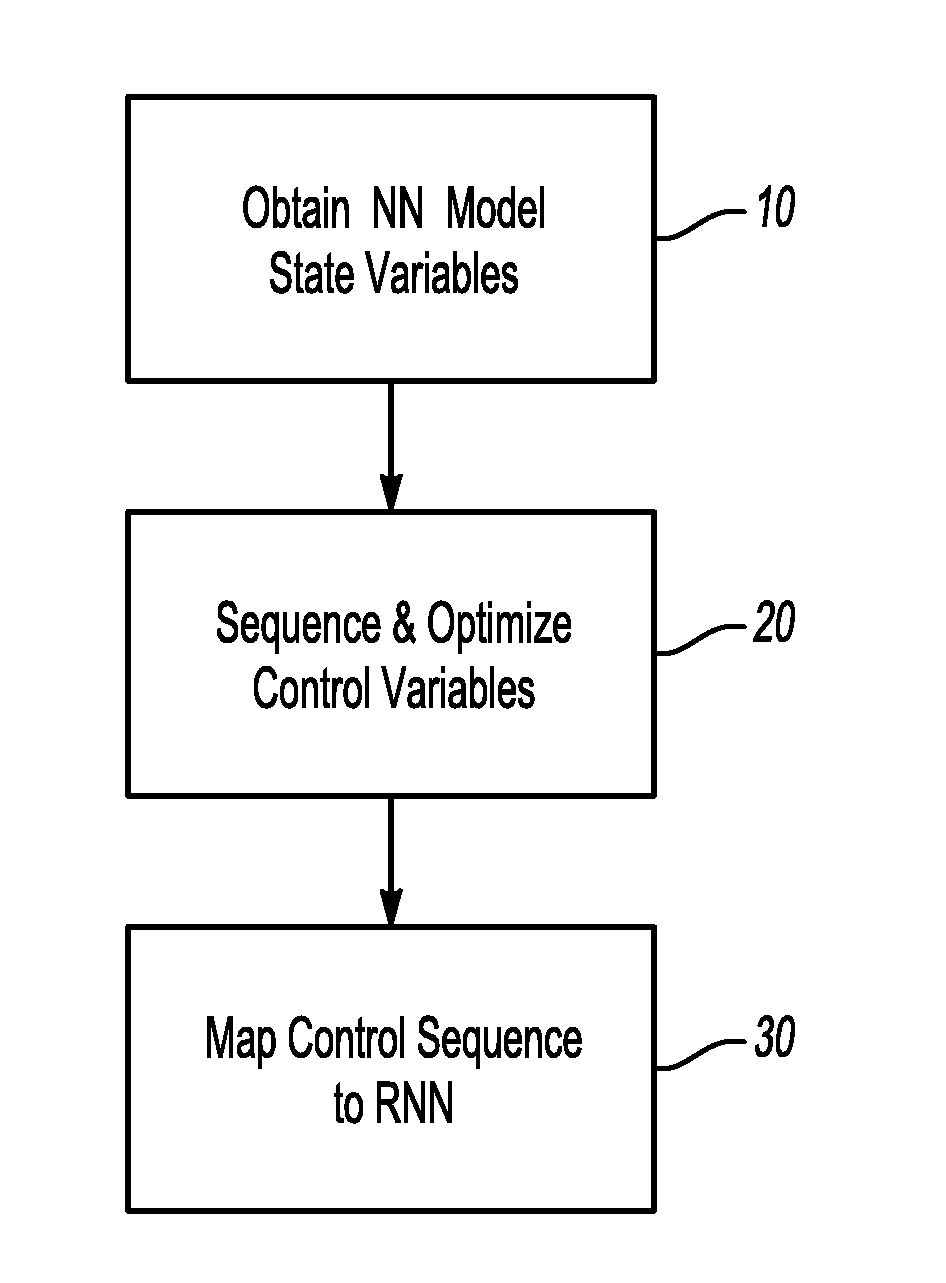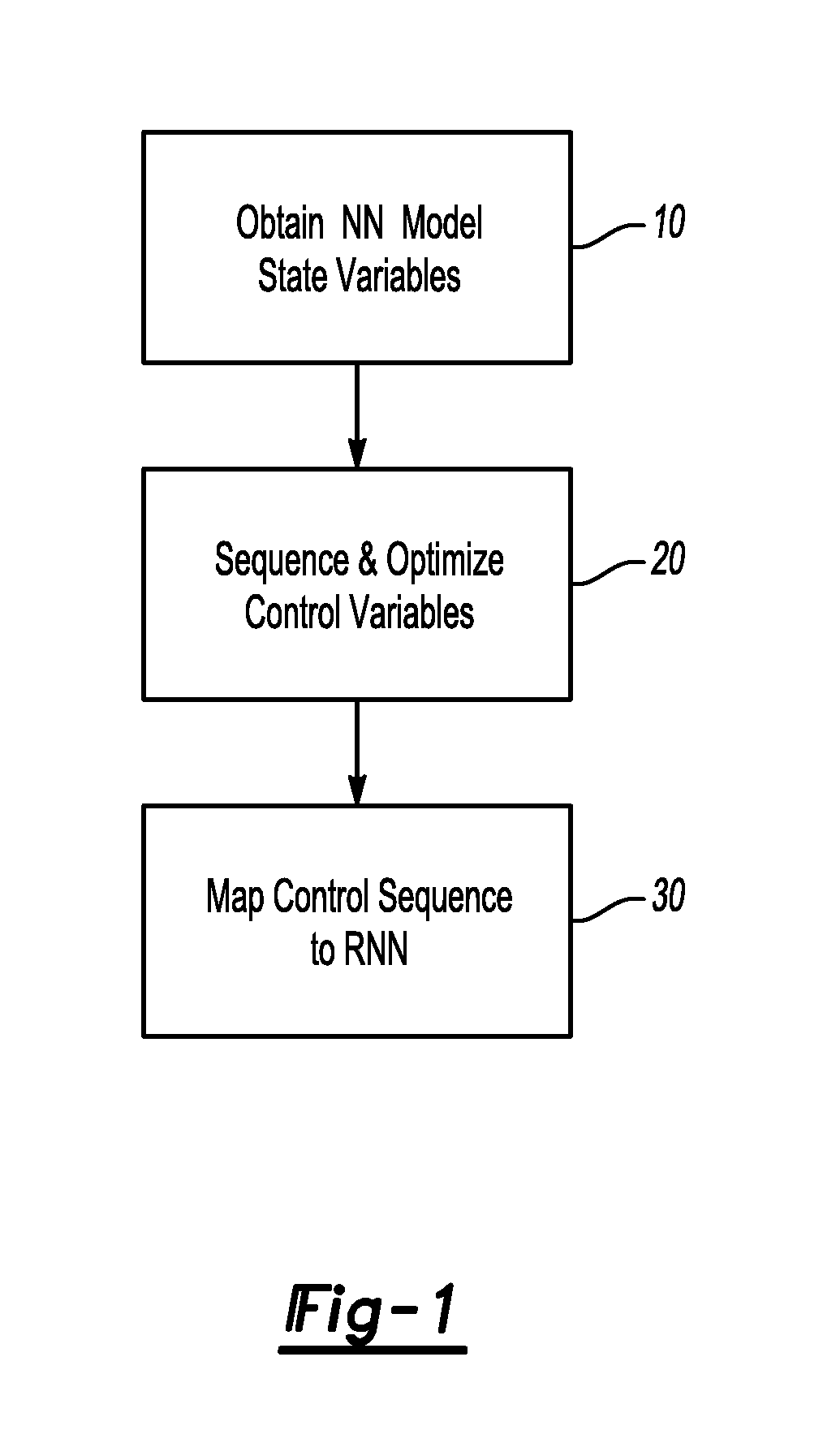Method for approximation of optimal control for nonlinear discrete time systems
a discrete time system and optimal control technology, applied in adaptive control, instruments, biological models, etc., can solve problems such as undesirable local minima, detracting from the overall operation of the neural network, and limiting the approximation range of optimal control variables
- Summary
- Abstract
- Description
- Claims
- Application Information
AI Technical Summary
Benefits of technology
Problems solved by technology
Method used
Image
Examples
Embodiment Construction
[0014]With reference to the drawing, at step 10 a neural network model is first identified and the state variables, i.e., the conditions of the neural network, are obtained. The neural network model may be obtained from a system itself or by experimentation in a high fidelity system simulator.
[0015]The neural network (N) model obtained at step 10 has the following form:
x(n+1)=f(x(n), u(n))
y(n+1)=h(x(n+1)) (1)
where both f and h are differentiable functions, and the dimensionality of the vector y (the output vector) is usually much smaller than that of the vector x (the internal state vector), e.g., dim(y)=2 and dim(x)=10. The reason for that may be understood from this observation. Suppose that the NN model does not have the output vector-function h, and some of its states are assigned to approximate the system outputs, and such outputs are termed state-outputs xo. When such NN is tasked with approximation of a complicated nonlinear system, it is usually very easy to obtain a good m...
PUM
 Login to View More
Login to View More Abstract
Description
Claims
Application Information
 Login to View More
Login to View More - R&D
- Intellectual Property
- Life Sciences
- Materials
- Tech Scout
- Unparalleled Data Quality
- Higher Quality Content
- 60% Fewer Hallucinations
Browse by: Latest US Patents, China's latest patents, Technical Efficacy Thesaurus, Application Domain, Technology Topic, Popular Technical Reports.
© 2025 PatSnap. All rights reserved.Legal|Privacy policy|Modern Slavery Act Transparency Statement|Sitemap|About US| Contact US: help@patsnap.com



